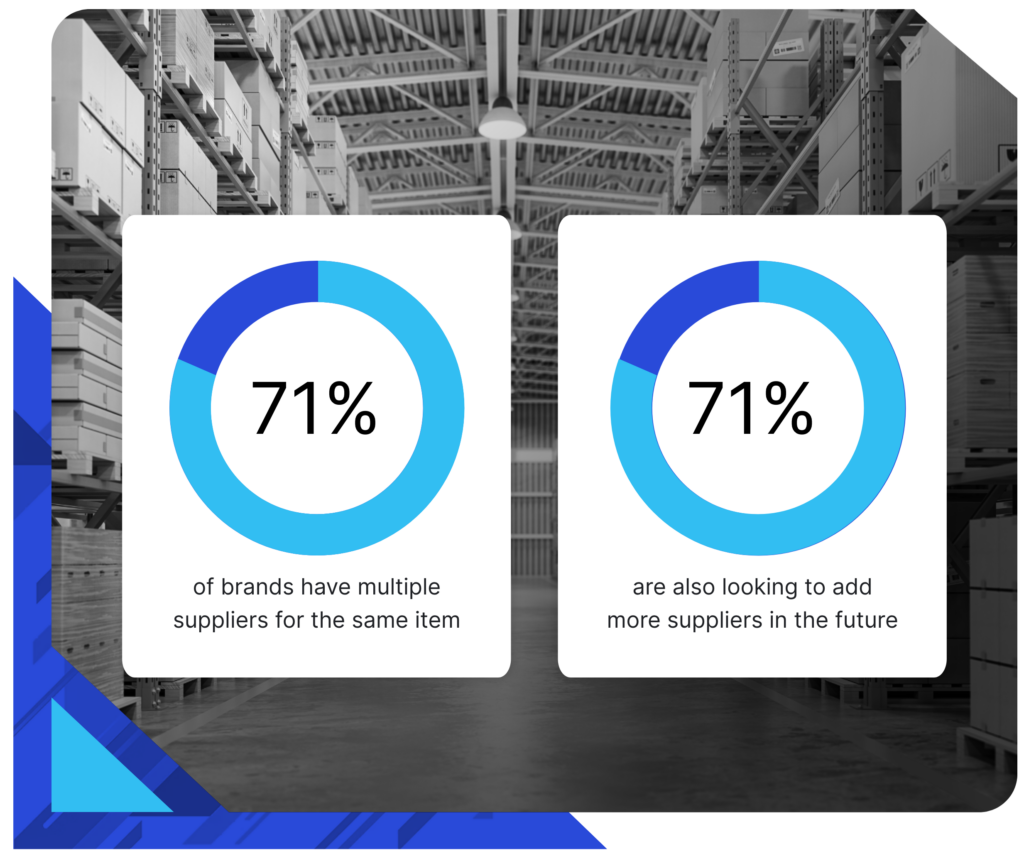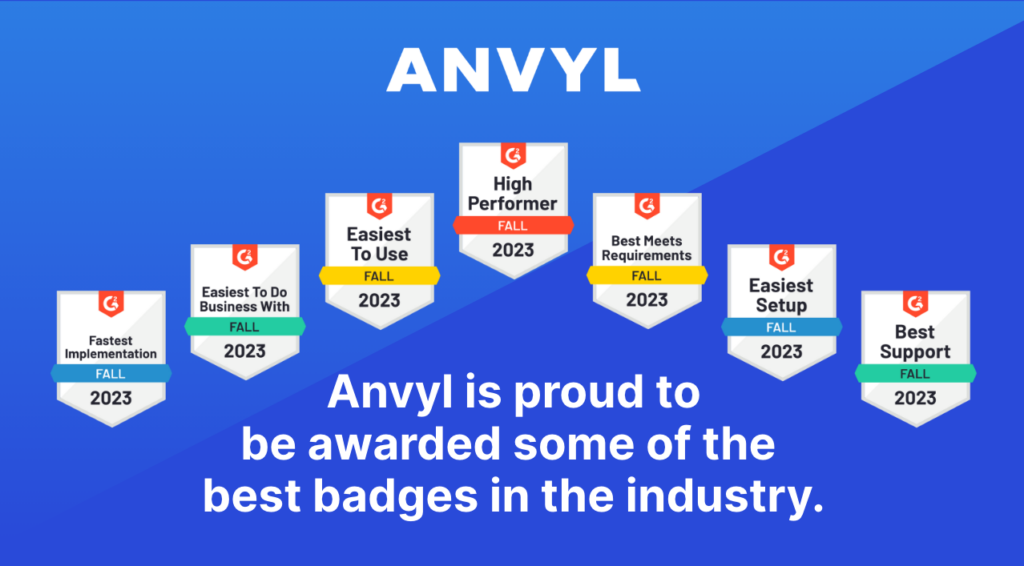Part Three of Our Ultimate Guide to Modern Supply Chain Management
Welcome to part three of our Ultimate Guide to Modern Supply Chain Management. In parts one and two of this blog series we covered how to conduct an internal supply chain audit and how to improve supply chain visibility. Today, we answer an important question that’s top of mind for supply chain managers: How do I reduce lead time across my supply chain?
As manufacturers seek to gain a competitive advantage by improving their logistics and operations, one area they’re focusing on is lead time. Lead time refers to how long it takes to create a finished product, from order placement to final delivery. This is because short lead times contribute to:
- A faster response to customer demand
- Faster time-to-market
- Reduced inventory costs
- Improved cash flow
- More accurate forecasting
- Leaner operations
On the other hand, long lead times can cause:
- A negative impact on customer satisfaction
- Higher inventory costs
- Risk exposure
- Higher transportation costs
- Product development challenges
- Loss of competitive advantage
As a result, reducing lead times and managing your supply chain are key to growth and success. In this article, we’ll go over 10 strategies that can help you gain control over your lead time and provide a better customer experience.
1. Prioritize Domestic Suppliers
Using domestic suppliers is one of the best ways to quickly reduce your lead time. While there are certainly some items that can only be sourced from international suppliers, there are many raw materials that can come from domestic sources. International suppliers can take as long as two weeks or more to deliver shipments. This means that as you calculate your lead times, you need to add in at least two weeks right from the start.
When you use domestic suppliers, you can eliminate the long shipping times that come along with using overseas suppliers. You can also avoid ever-increasing international tariffs and delays associated with language barriers and customs holdups.
Pro Tip: Choose Local Suppliers Whenever Possible
The closer your suppliers are to your warehouses, the easier it is to reduce lead time. Even when you prioritize domestic suppliers, you can still face delays if you source materials from across the country. The closer your suppliers are to your production facility, the easier it is to get supplies in a timely manner.
Additionally, consider diversifying your product sourcing by building relationships with multiple suppliers. According to Anvyl research, 71% of brands have multiple suppliers for the same item and 71% are also looking to add more suppliers in the future. Diversifying your supplier base can help reduce supply chain risks, source better pricing, improve product quality, and meet increasing customer demands.

2. Increase Order Frequency
Another way to reduce manufacturing lead time is to increase how often you order from your suppliers. While it might seem like ordering in bulk saves you money, it’s often not as much of a savings as you think. Instead of large bulk orders, try placing smaller orders more frequently which can help expedite shipments. This helps improve your inventory turnover, which can reduce your carrying costs.
Pro Tip: Perform a Total Cost Analysis
A total cost analysis can help you determine if smaller, more frequent shipments will help your business save money in the long run. No two businesses are identical — some do better with bulk purchase orders, while others benefit more from order fulfillment that comes in smaller batches. Performing a total cost analysis can help you understand the true value of large orders versus small, frequent shipments so that you can choose the method that leads to shorter lead times for your business.
3. Include Suppliers in Your Demand Forecasting Process
Many businesses work on fluctuating schedules, where the order frequency changes from month to month in response to demand. This means that you might know well in advance when you expect a higher volume of orders — and thus, when you’ll require bigger shipments from your suppliers. If you know you’re expecting an increase in demand thanks to demand forecasting, make sure to let your suppliers know in advance.
When your suppliers are aware of increases in demand, it reduces the likelihood that they’ll be caught off guard without the raw materials needed to fulfill your orders. Moreover, you can let your suppliers know when you anticipate fewer or smaller orders so they can accurately plan their own revenue and demand forecasting.
Pro Tip: Meet With Suppliers Periodically To Share Demand Forecasting Information
Having regular meetings with your suppliers can help you share your demand forecasting information more directly. This is a small courtesy, but a helpful one that can strengthen your partnership with your suppliers and help you both meet fluctuating demand levels throughout the year.
4. Refine Your Supply Chain Management Strategy
Supply chain management is the management of the flow of goods, services, and products throughout the entire manufacturing process. Many of the tips that help you improve lead time will help your supply chain management as well. A great way to improve lead time is to take a look at the entire supply chain and find areas that can be optimized. Here are just a few ways to optimize your supply chain:
- Draft a legally binding lead time contract with your suppliers outlining their lead times for parts and services. Include penalties for delayed orders, so they will give you realistic delivery times and not try to oversell their delivery expectations.
- Consolidate suppliers whenever you can. When you consolidate, you can leverage your buying power with suppliers, improve your vendor relationships, and focus more time on strengthening your partnerships.
- Focus on strengthening supplier relationships and creating long-lasting bonds.
- Review procedures regularly and iterate on existing processes until lead times are under control and you have data-backed projections for your lead time.
Pro Tip: Utilize Tools Designed To Enhance Supply Chain Management
While the above tips are a great way to begin looking at your supply chain management strategies, it can be a lot to try and handle manually. Digital tools can help you get control over your supply chain and enhance your entire process. Anvyl allows manufacturers to understand their supply chain management strategy and gain a big-picture view of their lead time.
5. Eliminate Unreliable Suppliers From Your Supply Chain
While it can be hard to sever relations with a supplier, there are times when it’s the best course of action. Unreliable suppliers will quote you incorrect lead times or consistently have late shipments. Not only is this frustrating for your team members and staff, but it also affects your own lead time and communications with your customers. Constantly changing your lead times for customers because of an unreliable supply can damage your brand’s reputation and create more problems in your supply chain management.
Pro Tip: Consider a Supplier Sourcing Solution
If you recognize the need to switch suppliers, using a sourcing solution can help you avoid any inventory deficits and get you back up and running with a new supplier quickly. While the hope is that this doesn’t happen often, using a sourcing solution can streamline the sourcing process when it is time to remove an unreliable supplier from your supply chain.
6. Insulate Production Processes To Mitigate Unexpected Delays
If you rely on suppliers to complete some of your production processes, you might want to consider bringing those processes in-house. This gives you more control over your production process and avoids any unexpected delays that might pop up when you rely on other companies to complete key parts of your process.
Pro Tip: Bring External Processes In-House To Reduce Expenses
Bringing external processes in-house can result in permanent production lead time reductions while also reducing fees associated with unreliable third parties. When you complete your processes in-house, you don’t have to calculate any shipment time for receiving those materials and can better manage your inventory management system.
However, you might have larger up-front costs to consider. It’s important to calculate the fees that you’ll avoid alongside the additional costs to see what the true time- and money-saving solution is.
7. Automate Order Entry and Order Processing
Automation helps eliminate the human error that can occur during manual processes. It can help you keep your workflow moving smoothly and create better tracking, data, and reporting metrics — which help you understand your business better and predict more accurate lead times. A great way to get started is to consider the tools you already use, like an ERP system, and see if there are any automation capabilities that you have access to but aren’t utilizing.
Pro Tip: Consider Your Internal Workflows That Can Benefit From Automation
Lead time probably isn’t the only area in your business that could benefit from more automation. Consider your other processes and ask yourself questions like:
- How long does it take to get customer purchase orders into your system?
- How often does the process get held up due to miscommunication?
- How often do orders get lost?
8. Streamline Internal and External Communication
Another common source of long lead times is miscommunication. Both internal and external communication are key to successful lead time forecasting, and when miscommunication occurs frequently it can slow down your production schedules. Therefore, improving communication improves your lead times.
Pro Tip: Measure Supplier Metrics and Provide Feedback With KPIs
When you can track metrics and provide clear data to suppliers, it helps clear up miscommunication and encourages supplier performance improvement. Tools like Anvyl can help track supplier performance and give you data-driven information.
9. Identify Bottlenecks, Rework, and Other Inefficiencies
In order to reduce lead times, you need to identify areas of inefficiency in your organization and within your internal processes. This helps you reduce lead times by improving accountability and efficiency. Common types of inefficiencies in the workplace you should be on the lookout for include:
- Bottlenecks
- Machine breakdown
- Rework
- Reorders
- Scrap
- Employee turnover
- Machine changeover
Pro Tip: Use Software To Identify Inefficiencies in Your Supply Chain
Software built for supply chain management can help you notice when there are inefficiencies in your production process. It can also help you notice patterns in the errors that occur on your production lines, which makes it easier to find solutions to the issues that are slowing you down and increasing your lead times.
10. Work Smarter, Not Harder
It’s important to implement new supply chain management technologies in your organization in order to boost efficiency and decrease lead times. Technology makes it easier to improve processes and manage your supply chain without relying on slow, inefficient, and time-consuming manual processes.
Pro Tip: Use G2 To Compare Solutions
With so many different technology solutions available, it’s important to take a look at what other manufacturers have to say. G2 is a great review site where you can see which digital solutions are benefiting businesses in your industry. You can check out Anvyl’s G2 profile to see what our customers say about us!

Reduce Lead Times With Anvyl’s Intelligent PO Management Platform
Reducing lead time doesn’t have to be a long or difficult process. When you optimize processes internally and choose suppliers strategically, it’s much easier to rein in out-of-control lead times and create a streamlined, manageable process.
Anvyl’s intelligent purchase order (PO) management platform empowers brands to take control of their entire supply chain and reduce lead time. We act as your single source of truth, allowing you to track and manage everything from PO issuance to delivery to your warehouse.
Just look at Fig.1, a DTC and retail brand selling high-performance, luxury skincare products. Using our platform, the brand increased on-time shipments by an impressive 41%, improved supplier engagement by 91%, and decreased PO revisions by 53%. All of which have the power to contribute to shorter lead times, leaner operations, and enhanced customer satisfaction.
To learn more about how you can follow in Fig.1’s footsteps, contact our team today to book a demo!



